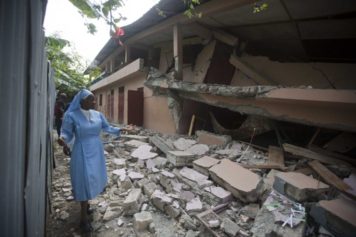The last decade has been a grim one for Haiti, the Caribbean country having endured hurricanes, floods, political turmoil and a massive earthquake. But amid the devastation, something rich and vibrant has emerged. “The horror of these years has inspired extraordinarily original and powerful art,” says Donald J. Cosentino, a UCLA professor emeritus and Haitian art specialist.
A new exhibition at UCLA’s Fowler Museum illustrates how the nation’s artists have responded to adversity by embracing and expanding on cultural traditions, especially the religion of voodoo. “In Extremis: Death and Life in 21st-Century Haitian Art” includes more than 70 of their paintings, prints, sculptures, installations and mixed-media pieces drawn mainly from loans as well as the museum’s holdings.
Cosentino, the show’s co-curator, says many works feature images of Baron Samedi, patriarch of a family of voodoo divinities, or his often capricious children, the Gedes, who embody not only death but sexuality and regeneration. “Death and carnival, sex and catastrophe — things you would never put together in our own culture jostle together here,” he says.
“The Gedes are a natural vehicle for seeing beyond the immediate disaster,” adds Patrick A. Polk, “In Extremis” co-curator and a Fowler curator. “Out of death comes life.”
The exhibition’s artists address death and disaster with a Haitian blend of the sacred and the secular. The havoc wrought by the 7.0 quake of 2010 is captured…
Read more: Karen Wada, LA Times


